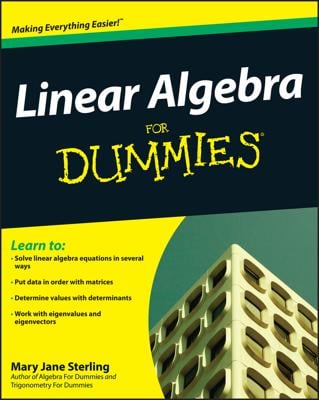Sets of elements have special operations used to combine them or change them. Another operation that’s used with sets (but that isn’t exclusive to sets) is factorial, denoted by the exclamation point.
You use the factorial operation in the formulas used to count the number of elements in the union, intersection, or complement of sets. Factorials appear in the formulas you use to count the elements in sets that are really large.
The factorial operation, n!, is defined as n! = n(n – 1)(n – 2)(n – 3) · · · 4 · 3 · 2 · 1. In other words, you multiply the number n, being operated upon, by every positive integer smaller than n. Some values of n! are: 1! = 1, 2! = 2, 3! = 6, 4! = 24, 5! = 120, 6! = 720, and so on. You see that they’re getting pretty big pretty fast.
One other factorial value that you need is 0! = 1. You may think that’s a typo. Nope. By definition, 0 factorial is equal to 1. It’s one of those quirky things that mathematicians declare and make everyone use so that answers to problems come out right. People wanted the formulas for counting to be consistent for all the numbers used.
Simplifying factorials isn’t difficult, but it isn’t as easy as you may think at first glance. To simplify
you can’t just reduce the 6 and the 3. You have to look at all the factors involved in each factorial operation. Write out the factorials, and you get
Now reduce the like factors and simplify:

Sample question
Simplify the factorial expression:

816. First, write out the expansions of the factorials. But wait! (Notice that despite the exclamation point, the factorial doesn’t work on the word wait.) Instead of writing out all the factors of 18!, just write 18! as 18 · 17 · 16 · 15!. You choose to stop with the 15 because of the 15! in the denominator.
The 15! terms will cancel out, so don’t bother to write out all those identical terms in both numerator and denominator:

Now divide out any other common factors and simplify:

Practice questions
Simplify the expression:

Simplify the expression:

Simplify the expression:

Simplify the expression:

Following are answers to the practice questions:
The answer is 1,680.
Expand the numerator, and leave the denominator as 4!. Then reduce and simplify:

The answer is 2,652.
Expand the numerator, and leave the denominator as 50!. Then reduce and simplify:

The answer is 10.
Expand the numerator and the first factor in the denominator. Reduce the common factors and simplify:

The answer is 15,504.
Expand the numerator and the first factor in the denominator. Reduce the common factors and simplify:


